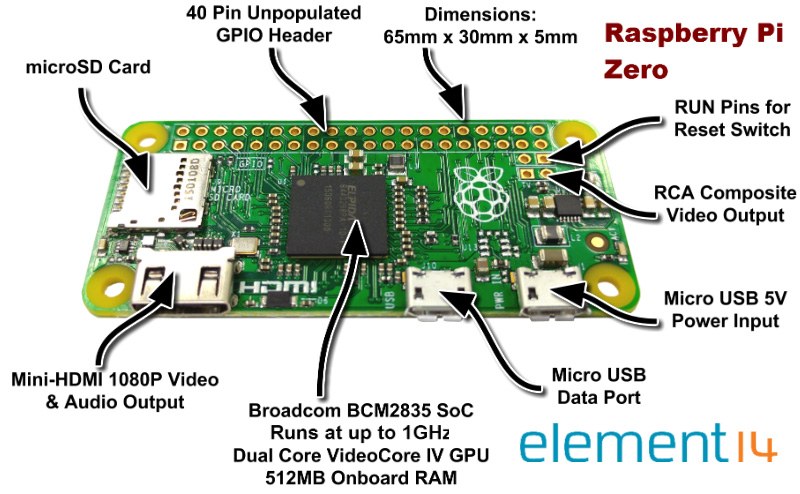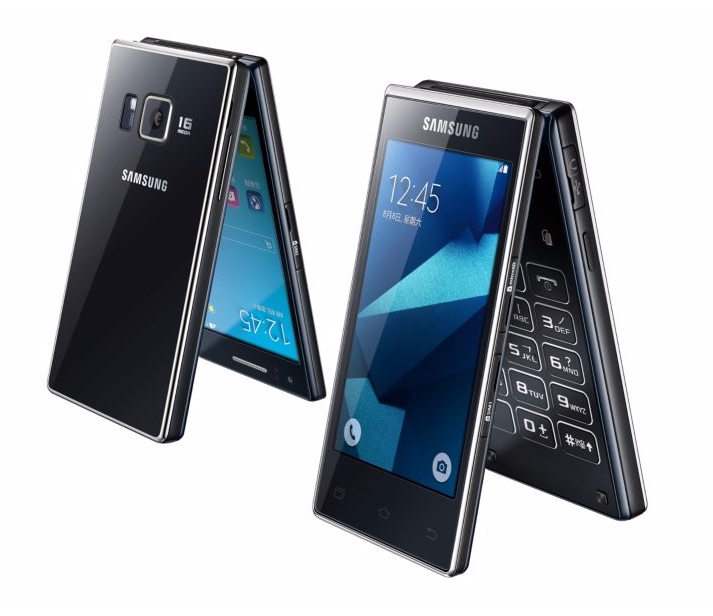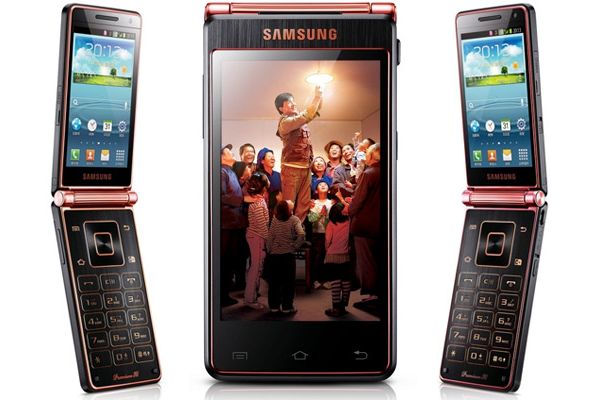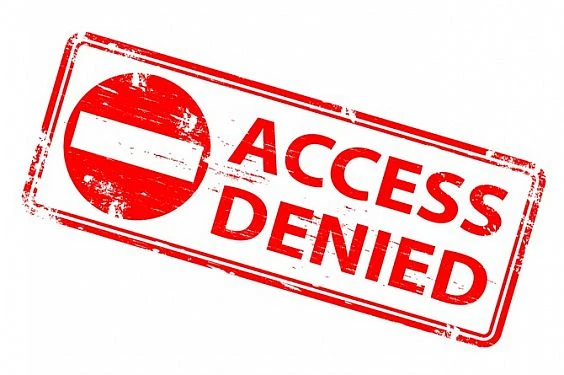We gaze into our crystal ball to see how the 2015 and 2016 iPhones will differ, as we look at the iPhone 6s and the iPhone 7.
There's something very funny about reporting tech news, something that's become a bit of an in-joke amongst us journos. Whenever something rumour based or speculative is posted there are always those who say "this is nothing but rumours and speculation, it could be wrong, it's not factual..." and so on, but the truth is this complaining doesn't reflect the majority opinion. It can't possibly, because the fact of the matter is that forthcoming and rumoured devices generate so much more interest than handsets that have been released. Like any website we look at Google's analytics for traffic and, get this, as soon as a new phone like the iPhone or Nexus launches the number of people looking at content and searching for content related to those devices NOSEDIVES - but before that, all the while the phone is merely a rumour, it SKYROCKETS. People, readers, you lot, love a rumour. That's the fact of the matter, you love anticipating a new phone that isn't out yet - the next best thing - so much more than something that is launched and has become a reality. You love a tease. Don't even try to deny it!
So with that in mind we're quite happy to write about things that haven't been launched yet and give you your fix!
Today we are comparing the current-gen iPhone 6s (the one released in September 2015) with 2016's as-yet unnanounced iPhone 7. (The image above is an awesome mockup by Computerbild.de of what the iPhone 7 could look like, by the way).
This is worth a look because of a few other factors. First being how unnervingly thorough, far-reaching and accurate the modern rumour mill is - nothing escapes its tendrils and already we're getting plenty of juicy information about next year's iPhone 7, much of it from repeatedly proven reliable sources. On top of that, although the iPhone 6s has just come out Apple has likely been at work on the next iPhone–the iPhone 7–for at least a few years now. And because of the way Apple’s iPhone product cycles work, it’s relatively easy to predict what a major new iPhone design will feature. You see, Apple historically has released iPhone upgrades on a “tick-tock” basis. Every tick is a major new form-factor upgrade and every tock retains the old form factor but usually introduces a new feature.
Examples of “tick” releases are the iPhone 4, the iPhone 5, and the iPhone 6 (and 6 Plus). These iPhones all featured radical form-factor redesigns over the previous iPhone. The iPhone 4 had the first Retina display and glass and aluminum body. The iPhone 5 had the 4-inch screen. The iPhone 6 had the 4.7-inch screen and so on. Examples of “tock” releases are the iPhone 4S, the iPhone 5s, and the iPhone 6s. In each case each of these phones retained the same form-factor of its predecessor but added new usability features. The iPhone 4s added Siri; the iPhone 5s added the Touch ID and M7 motion coprocessor; and the iPhone 6s added the 3D Touch display.
"The big worry is that as the iPhone 7 is said to be so slim," reports Expert Reviews, "it means that there's less room inside for battery, which again will have an impact on battery life. I think it's a little early to start panicking yet, as reduced battery life is not a certainty and there are a few tricks that Apple might have up its sleeve. For starters, the new A10 chip will, no doubt, be more energy efficient than the A9 SoC in the iPhone 6S. It will probably be built using a smaller fabrication process, which will also mean that it takes up less room in the case, leaving more room for a bigger battery. Next, Apple will most likely work on making iOS 10 more energy efficient, again helping boost battery power."
Word on the street suggests we will probably see three iPhone 7 handsets in 2016. Apple is apparently keen to rekindle its iPhone Xc range and will utilise the iPhone 5s as the reference model for the iPhone 7c, meaning it will support TouchID among other things. This isn’t the first chatter we’ve heard about the iPhone 7c, either. Earlier in the year multiple sources began claiming Apple would release another iPhone C handset in 2016 in order to further bolster its strangle hold one the mobile space where it currently commands around 90-odd % of all profits.
A new report from TrendForce claims the iPhone 7 will be water-proof, a feature many Android handsets have had for YEARS. Beyond this the company reckons Apple will radically alter the design and finish of the handset and also include more RAM, perhaps as much as 3GB, as well as a third handset called the iPhone 7c.
“Apple will release the upgraded 4-inch iPhone C series in the second quarter of 2016,” said the report. “The next iPhone (currently dubbed “iPhone 7”) will be introduced in the second half of next year. The major selling points of the next iPhone will be the 3GB memory upgrade for the 5.5-inch model and waterproof feature. Based on TrendForce’s estimation, about 260 million iPhones will be shipped in 2016, representing an annual growth of 12.5% and a market share of 18.5%. With the smartphone market becoming less profitable, iPhone will still have the highest margin next year compared with products from rival vendors.”
It added: “Samsung’s shipments are anticipated to drop 4% annually to 310 million due to Chinese competitors undercutting its prices. Apple is anticipated to significantly narrow its market share gap with Samsung next year as well. TrendForce analysis indicates that Samsung will hold 22% of the global smartphone market in 2016, a decline from 2015. Wu added that Samsung’s flagship devices for this year have hit the ceiling in specs, so the South Korean powerhouse will be straining to bring hardware innovations to its next smartphone release.”
“KGI analyst Ming-Chi Kuo,” reports Apple Insider, “whose predictions have in the past been accurate, said he expects Apple's upcoming 4-inch iPhone to be functionally similar to a buffed iPhone 5s, the last iPhone model to sport a 4-inch display. Kuo says demand is still present for a smaller Apple handset, and the company plans to capitalize come next year. Mass production will likely start sometime in the first half of 2016, suggesting a potential product launch alongside next year's ‘iPhone 7’ lineup.”
Speaking of the iPhone 6s -- this year’s model saw a raft of major improvements in several key areas, though most notably imaging and processing power. Beyond this we saw more RAM included, 2GB to be specific, as well as slightly thicker chassis overall, owing to the inclusion of 3D Touch technology in the display panel. So while it might look A LOT like last year’s model it will function quite a bit differently.
Sales have been INSANE, too:
Apple announced it sold more than 13 million new iPhone 6s and iPhone 6s Plus models, a new record, just three days after launch. iPhone 6s and iPhone 6s Plus will be available in more than 40 additional countries beginning October 9 including Italy, Mexico, Russia, Spain and Taiwan. The new iPhones will be available in over 130 countries by the end of the year.
This is a HUGE figure and, importantly, it is quite a bit more than Apple shifted last year which, again, is pretty significant for a release many consider to be minor or incremental. China helped in a big way this year, having access to the new iPhone 6s and iPhone 6s Plus at the same time as other markets around the world. Apple confirmed 13 million sales during the first few weeks but that figure is expected to grow rapidly in the coming weeks and months.
“Sales for iPhone 6s and iPhone 6s Plus have been phenomenal, blowing past any previous first weekend sales results in Apple’s history,” said Tim Cook, Apple’s CEO. “Customers’ feedback is incredible and they are loving 3D Touch and Live Photos, and we can’t wait to bring iPhone 6s and iPhone 6s Plus to customers in even more countries on October 9.”
But those iPhone 6s sales could pale in comparison to the next iPhone 7. So without further ado, let's gaze into our crystal ball to see what each phone will be like, starting with the specs:
iPhone 6s vs Likely iPhone 7: Major Specs
Current iPhone 6s
Display: 4.7-inch and 5.5-inch 3D Touch, max res of 1920x1080
Design: It looks exactly the same as the iPhone 6 (rounded corners, aluminum body)
Storage: 16, 64, and 128GB
CPU and RAM: A9 processor, 2GB RAM
Front Camera: 5MP
Rear Camera: 12MP, 4K video recording
Likely iPhone 7
Display: 4.7-inch and 5.5-inch 3D Touch, but likely with a QHD display of 2560 x 1440 resolution
Design: Completely new design. Thinner body and bezel.
Storage: 32, 64, and 128GB
CPU and RAM: A10 processor, 3GB RAM
Front Camera: 5MP with wide angle lens
Rear Camera: 12MP, 4K video recording, optical image stabilization.
The important thing to remember with iPhone upgrades is that the tock “S” cycle upgrade primarily see internal enhancements and the tick prime upgrades see body design changes. That’s why the iPhone 6s had more radical internal changes from the iPhone 6 than the iPhone 6s will to the iPhone 7. The iPhone 6s got the A9 processor and FINALLY 2GB of RAM. That means that the iPhone 7 will almost certainly have an A10 chipset and 3GB of RAM. Traditionally Apple has kept the amount of RAM the same for more than one year, but by the time the iPhone 7 ships in autumn 2016, most Android phones will have 4GB RAM minimum. Apple will need to keep up, if not match it.
As for storage options, with the iPhone 7 we finally expect Apple to drop the 16GB entry level option for a 32GB entry level model. Needless to say, dropping the 16GB storage model is long overdue. No one, NO ONE should buy a 16GB smartphone. You’ll fill it all up with large 12MP photos in the first month you own it.
iPhone 6s vs Likely iPhone 7: Design
The iPhone 6s looks exactly as the iPhone 6 does, just a bit thicker. But if that iPhone 6s design is looking a bit stale to you, then you are going to love the iPhone 7. It will feature a radically different design. What to expect? A thinner body is guaranteed. KGI Securities superstar analyst Ming-Chi Kuo, who has an excellent track record with predicting iPhone specs, says the iPhone 7 will be Apple’s thinnest yet–approaching the thinness of the iPod touch (which is really, really thin) Kuo expects the iPhone 7 to be between 6.0mm and 6.5mm thin (the iPod touch is 6.1mm thin).
Apple is now busy testing out designs and features for the iPhone 7; handsets are developed way in advance of release and this is why we get some many leaks. And according to information leaked on Weibo by a reliable tipster Apple is testing out five iPhone 7 prototypes. The news was picked up by G For Games, another reliable source, which reports that Apple is testing out a bunch of different features for next year’s iPhones.
Apple is currently experimenting with at least five different iPhone 7 models, each with its own unique hardware characteristics. By the sound of it Apple is trying to figure out which technologieswould go best in the upcoming model, all the while keeping an eye on the performance of its suppliers,” said the report. “Reportedly, some of the technologies that can be found in these prototypes include a USB Type-C connector compatible with headsets, wireless charging technology, multi-Force Touch, dual camera configurations, and fingerprint recognition technology embedded within the display.”
Apple is also said to be experimenting with AMOLED displays but this new display technology isn’t expected to appear inside commercial iPhones until at least 2018.
The USB Type-C rumour is very interesting, however, as it ties in nicely with yesterday’s report about Apple ditching 3.5mm jack support on the iPhone 7 in favour of something more proprietary. Is it possible Apple could switch out its lightening port connector for USB Type-C? Sure, it’s possible. But it just doesn’t seem very likely given the company’s track record. Still, there are PLENTY of benefits to using USB Type-C, so perhaps Apple is turning over a new leaf?
There’s also strong hints that Apple is working on doing away with the physical home button and embedding a virtual home button and Touch ID in the screen itself, but that might not come until the iPhone 8. Apple has filed patents for such a in-screen home button, but the company files patents for everything–99% of which never make it into a shipping product. Also, Digitimes is reporting that Apple has placed LCD display driver orders with touchscreen supplier Synaptics for its next iPhone. It would not need these LCD display drivers if its own work on integrated Touch ID and displays were moving along at pace.
One aspect of the new iPhone 7’s potential design could cause some users some issues, however, as multiple sources are now claiming Apple is looking to do away with traditional headphones, meaning no 3.5mm jack-support on the iPhone 7. It will be replaced by a lightning port, apparently, and this of course means you’ll have to buy and adaptor in order to make your old headphones work with the iPhone 7.
Why is Apple doing this? Apparently it is ALL about design. Apple wants to make the iPhone 7 1mm thinner than the iPhone 6s and in order to do this it needs to ditch the traditional 3.5mm jack port. Fortunately, Apple’s lightning connector is EXACTLY the right size and, fortunately again, Apple has no issues selling you a $15 convertor to access it.
Sounds crazy, right? But remember: Apple did exactly the same thing with CD drives and USB ports on its MacBooks, so, yeah… you’ve been WARNED.
iPhone 6s vs Likely iPhone 7: Waterproofing
Earlier this autumn the internet freaked out when videos surfaced of the iPhone 6s surviving 30 minutes underwater. It turns out Apple secretly added new adhesive strips inside the iPhone 6s to block any moisture getting in. Now a Chinese Mac blog is claiming that this was just a dry run (get the pun) for Apple, and that the iPhone 7 will officially be certified as waterproof.
In addition to waterproofing by using internal gaskets, another Chinese site is claiming Apple will ditch the aluminum casing of the iPhone 6s for an all new plastic material on the iPhone 7 to make sure the device is fully waterproof. We don’t see Apple’s iPhone 7 being a plastic phone, but only time will tell.
iPhone 6s vs Likely iPhone 7: LTE chipset
Right now the iPhone 6s uses an LTE chipset from Qualcomm, but recent rumors point to Intel working on an iPhone-compatible LTE chipset for the iPhone 7. If this is true users won’t likely notice much of a difference. Instead, Apple would use the Intel LTE chip so it can drive component costs down.
iPhone 6s vs Likely iPhone 7: Display
The iPhone 6s gained the 3D Touch display that the Apple Watch has (there, it is called the Force Touch display)–of course the iPhone 7 will adopt this 3D Touch display as well. But we also expect the iPhone 7 to get a higher resolution display, specifically a QHD one with a resolution of 2560 x 1440, as many Android handsets have. By autumn of 2016 anything less that 2560x1440 will be the equivalent of what standard definition is today.
Apple could also make subtle upgrades to the 3D Touch display in the iPhone 7–for example, making it sensitive to more than two types of pressure inputs, but other than that we don’t expect the 3D Touch display to change much.
Also, it is unlikely that the iPhone 7 will adopt an AMOLED display, which is found in Samsung phones and the Apple Watch, according to Kuo. In a recent investors note he stated:
"Based on recent comments by Minebea, one of the main iPhone backlight unit suppliers, we believe AMOLED will not penetrate iPhone for the next three years. Moreover, Hon Hai is preparing to invest in Gen-6 LTPS TFT-LCD production lines in Zhengzhou, China for mass production in 2018, suggesting the iPhone line will likely stick with TFT-LCD technology in 2018 and thereafter. […]
Minebea, major BLU supplier of iPhone, stated to investors on November 5 that it does not foresee risk of TFT-LCD share loss to AMOLED in high-end smartphone market in next three years & guides growth in TFT-LCD going forward. As Apple and Samsung are the only two brands that currently offer premium smartphones, we think Minebea’s statements imply it does not expect iPhone to adopt AMOLED in the coming three years, given that Samsung’s models are already being equipped with it."
iPhone 6s vs Likely iPhone 7: Camera
Internally the iPhone 6s gained a huge camera upgrade with its 12MP rear camera (up from the 8MP camera in the iPhone 6) and its 5MP front FaceTime camera (up for 1.8 MP in the iPhone 6). But going to the iPhone 7 we expect the camera upgrade to be less pronounced. Apple will probably keep to a 12MP rear camera but add optical image stabilization across the line (right now only the “Plus” models feature it). The iPhone 7 will also probably retain the same FaceTime camera.
The iPhone 6s also gained 4k video recording on the rear camera–something we don’t see changing or expanding on for the iPhone 7. However, it’s possible the front FaceTime camera could gain 4k video recording in the iPhone 7.
iPhone 6s vs Likely iPhone 7: A new 4-inch iPhone?
One final prediction according to Kou is that Apple will launch a new 4-inch iPhone alongside the iPhone 7 in 2016. Kou states:
"As there is still demand for a 4-inch iPhone, we believe Apple will upgrade this product line. Because the iPhone 5s is more popular than the iPhone 5c, we think Apple is likely to launch an upgraded iPhone 5s. We predict Apple will mass-produce this new 4-inch iPhone in 1H16 with metal casings. In order to make the current iOS 9 or next-generation iOS 10 run smoothly, Apple may adopt an A9 chip for this new phone."
Whether or not this new 4-inch iPhone is an updated iPhone 5 or a rebranded iPhone 7c – the iPhone 6s could see significant competition from iPhones on all sizes of the display spectrum.

























